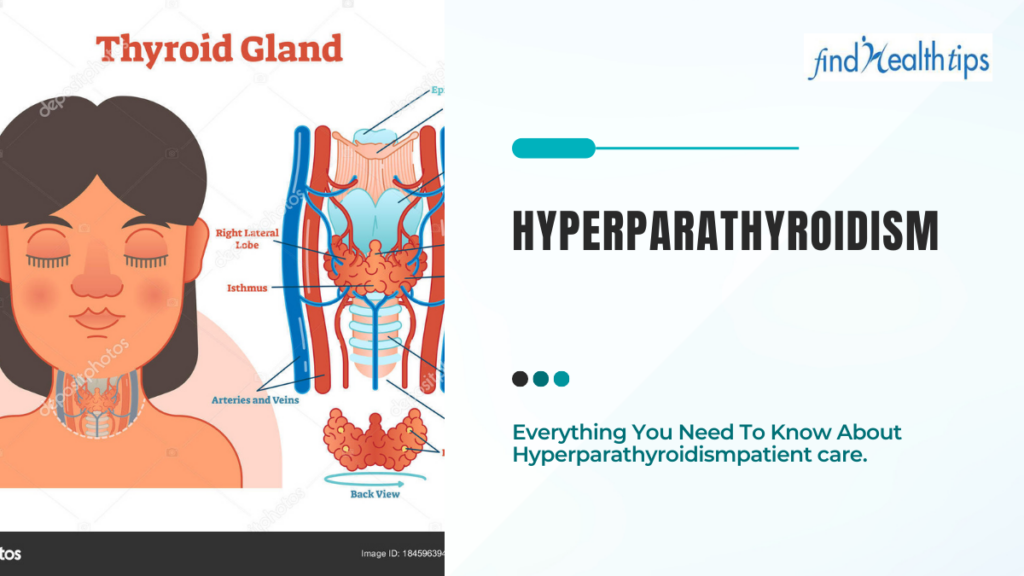Introduction
Hyperthyroidism is a medical condition characterized by the excessive secretion of parathyroid hormone. It causes a rise in the concentration of calcium in the blood. It is also known as “hyperparathyroidism” or “parathyroid disease.”
The condition is more commonly found in women than in men. A non-cancerous tumor mainly causes this ailment in the parathyroid gland. It is seen that the patient suffering from this condition suffers from some severe complications like kidney stones, bone loss, and high blood pressure.
If left untreated, hyperthyroidism can cause severe or even fatal side effects. However, hyperthyroidism is an easily treatable condition. It is best to seek treatment from an experienced surgeon.
Certain reliable medical centers in Beverly Hills specialize in offering advanced care to their patients to avoid any future complications of hyperparathroidism. This blog will take an in-depth look at hyperthyroidism, its symptoms, and its treatment.
What Is Hyperthyroidism?
It is a medical condition in which the parathyroid glands in the neck make too much parathyroid hormone (PTH). It is also called hyperparathyroidism. High calcium levels in the blood can be caused by this extra hormone, which can lead to a number of health problems.
Parathyroidism is generally treated with surgery to remove the overactive gland or glands. In some cases, medication may be used to control the symptoms.
Symptoms
Several symptoms can be associated with parathyroidism, although not everyone will experience all of them. Some of the most common symptoms are tiredness, weakness in the muscles and bones, pain in the bones, depression, anxiety, and stomach problems like nausea and vomiting.
In more severe cases, hyperparathyroidism can lead to kidney stones, osteoporosis, and heart arrhythmias.
Read below to find out how this medical concern is treated and the essential elements of the treatment procedure.
Treatment
There are different treatments for hyperthyroidism depending on the severity of the condition. If the condition is mild, doctors may give the patient calcium supplements and keep a close eye on them.
Doctors may recommend surgery to remove the parathyroid gland if the condition is more severe. In very rare cases, radiation therapy may be necessary.
Here are some essential elements of the treatment procedure:
4 Main Gland Parathyroid Assessment Tools
Four main gland parathyroid assessment tools determine the gland’s health and function. These include the parathyroid hormone (PTH) level, the calcium level, the phosphorus level, and the magnesium level.
Each of these tests provides essential information about the gland and its function. It ensures that every parathyroid surgery done is successful.
Parathyroidectomy
A parathyroidectomy is a surgery in which one or more of the parathyroid glands are removed. If less invasive ways of treating the symptoms of parathyroids don’t work, a parathyroidectomy may be suggested.
The surgery is typically performed under general anesthesia and takes about 1-2 hours.
Recovery from a parathyroidectomy is usually relatively quick, and most people can get back home the same day or the next day. Several trusted medical centers have highly specialized surgeons that ensure the surgery is successful.
Intraoperative PTH Testing
Intraoperative PTH testing is a relatively new procedure used to monitor patients during surgery. It involves taking a sample of the patient’s blood and testing it for parathyroid hormone (PTH) levels. This information can then be used to adjust the surgery accordingly to minimize the risk of complications.
Overall, intraoperative PTH testing is a safe and effective way to monitor patients during surgery. It can help to ensure that the surgery is as safe and effective as possible and can also help to improve the patient’s long-term outcomes.
Conclusion
If you are suffering from hyperthyroidism, you’re not alone. Millions of people around the globe are affected by this rare disease. However, don’t be scared. The truth is that the condition is treatable, and you can even lead a normal life. Read this blog to learn about the symptoms, diagnosis, and possible treatments.

